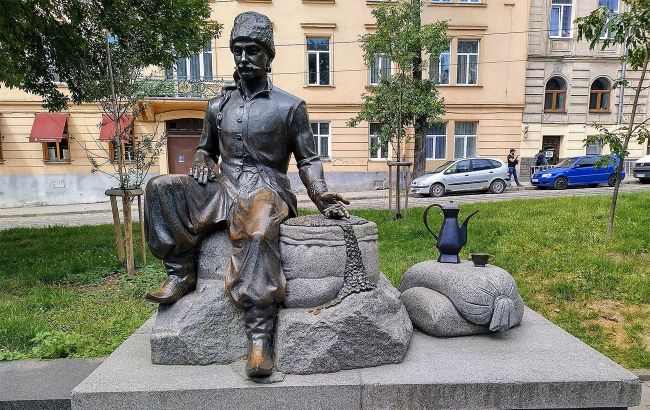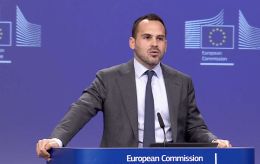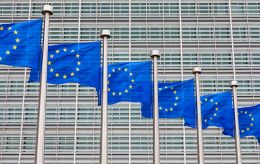Ukrainian coffee pioneer brings Viennese style to all of Europe — Here's his story
 How Yurii Kulchytsky taught all of Europe to drink Viennese coffee (photo: Wikipedia)
How Yurii Kulchytsky taught all of Europe to drink Viennese coffee (photo: Wikipedia)
Yurii-Franz Kulchytskyi was a Ukrainian from the Lviv region who entered history not only as a hero of the 1683 Battle of Vienna but also as the founder of the first European coffeehouse. It was thanks to him that Vienna, and later all of Europe, fell in love with aromatic black coffee, which has now become an integral part of global culture. Here is the story of Yurii-Franz Kulchytskyi's heroism and his invention of Viennese coffee.
From heroic scout to coffee entrepreneur
Yurii-Franz Kulchytsky was born in the 1640s in the village of Kulchytsi near Sambir, not far from Lviv.
As a young man, he joined the Sich, and during one of the campaigns, he was captured by the Ottomans. It was there that he learned the Ottoman language and customs, including how to drink and brew coffee. This knowledge proved crucial during the Ottoman siege of Vienna in 1683.
After his captivity, he worked as a translator for the Belgrade branch of the Viennese East India Company. There, he earned a modest fortune and moved to Vienna. There, he started his own business trading carpets, silk, and jewelry.
Later, he left his company and became an imperial courier between the Habsburg monarchy and the Ottoman Empire.
Heroism and the saving of Vienna
In 1683, the Sultan of the Ottoman Empire decided to attack Vienna and started the siege. Such a prolonged siege brought famine, epidemics, despair, and panic to the city.
When the authorities were on the verge of surrendering Vienna, Rüdiger Starhemberg decided to request urgent help from Emperor Leopold and Duke Charles V.
However, all couriers sent with letters were captured by the Ottomans. They began searching for someone who knew the Ottoman language and customs.
Kulchytsky actively participated in the city's defense and was wounded in battle. When the situation was on the brink of collapse, he volunteered to infiltrate the Ottoman camp to deliver a message to Duke Charles V.
He heroically passed through the siege, even interacting with the Ottomans while posing as a merchant, and successfully delivered the important letter. Shortly after, allied forces arrived to lift the siege of Vienna.
Grateful citizens recognized Kulchytskyi as a hero, and the authorities awarded him a substantial sum of money and a silver medal.
In 1684, he was awarded the title of imperial translator of the Ottoman language. As part of the spoils, he received 300 sacks of coffee taken from the captured camp of Pasha Kara Mustafa.
 Monument to Yurii Kulchytskyi in Vienna (photo: Wikipedia)
Monument to Yurii Kulchytskyi in Vienna (photo: Wikipedia)
How a Ukrainian gave coffee to Europe
After the victory over the Turks, Kulchytskyi received sacks of strange black beans left in the enemy camp. Many initially thought it was camel feed, but the man from Lviv knew it was coffee.
He opened the first coffeehouse in Vienna, "Zur blauen Flasche" (The Blue Bottle). Kulchytskyi taught Viennese people to brew coffee in the Eastern style, but added milk and sugar to make the drink milder for European tastes.
Thus, Viennese coffee, a symbol of European coffee culture, was born, and Yurii Kulchytskyi is considered the creator of this drink. His coffeehouse gained popularity thanks to "Viennese coffee" and became one of the well-known spots in Vienna.
Remembering the Ukrainian in Vienna
In the Austrian capital, there is Kolschitzkygasse street named after Kulchytskyi, as well as a commemorative plaque near his coffeehouse. There is also a monument to Kulchytskyi in Vienna, depicting him with a tray and a coffee pot.
In the village of Kulchytsi in the Lviv region, a monument to Yurii Kulchytskyi has been erected.
In 2013, a monument to Kulchytskyi was officially unveiled on Danylo Halytsky Square.
Earlier, we wrote about Ukrainians who were forgotten at home but famous worldwide.
Sources: Encyclopedia of the History of Ukraine, Ukrainian Institute of National Memory, BBC Ukraine.

